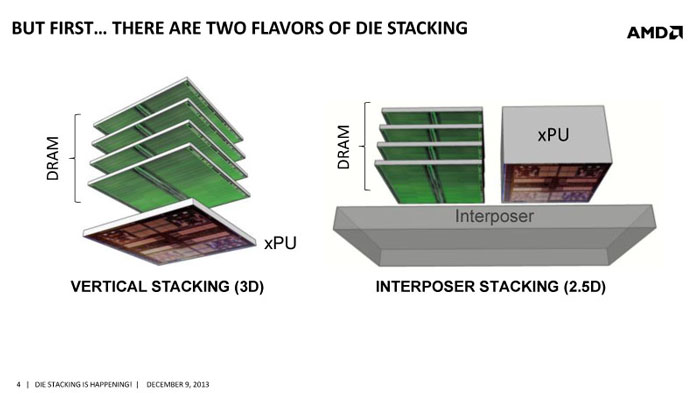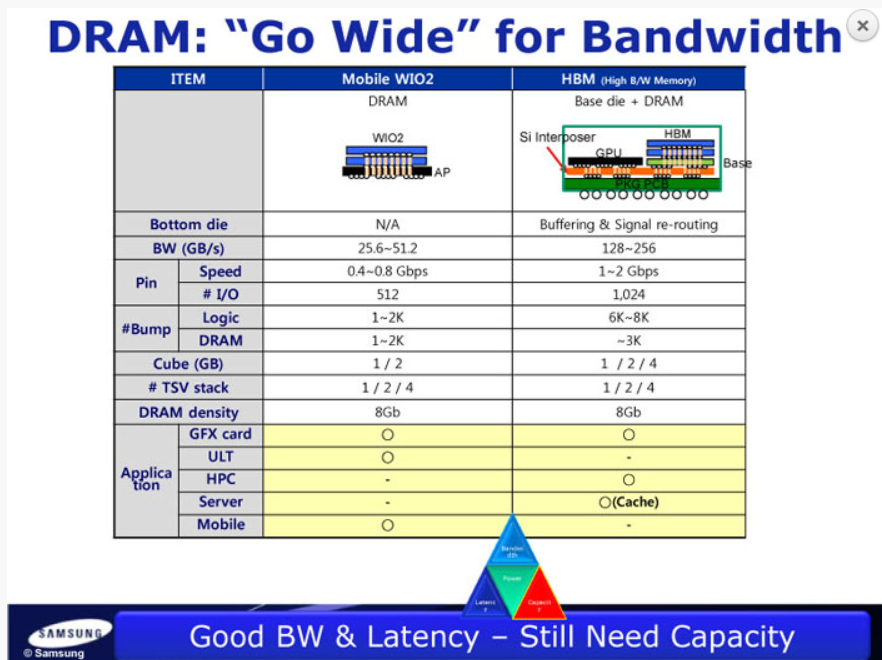The Pascal name is taken from the 15th century mathematician Blaise Pascal, just like Fermi and Kepler. As NVIDIA moves their GPUs away from just being about processing graphical information and more to raw engines for number crunching the names are rather appropriate. However, as with faster and more powerful CPUs the bottle neck is not how many ones and zeroes you can handle, but how to keep the data flowing to the GPU/CPU. The problem here has always been one of memory, GPUs are increasingly more memory hungry than before. They need larger and faster frame buffers to keep things going. GDDR5 is simply not going to cut the next jump in graphical fidelity.
To get around this little problem both AMD and NVIDIA were looking to move forward with HBM (High Bandwidth Memory). This is really a no brainer, but there are two types of HBM, 3D and 2.5D. The differences between the two are fairly significant. In traditional 3D HBM you have the memory stack that rides on top of the logic chip (think CPU/GPU). The memory is connected using TSVs (through silicon vias) or paths through the memory ICs in the stack. In 2.5D you have the same stack of memory using TSVs, but the logic chip and memory sit in top of an interposer which facilitates communication and requires less changes to the GPU to implement. Both AMD and NVIDIA have opted for 2.5D for their GPUs.

NVIDIA did confirm this, but it was very clear from the renders we have all seen of Pascal. As we have previously covered AMD is looking to drop 4GB of memory on their 390X cards, mostly due to product availability, but there are certainly plans to extend this out to 8GB when that is ready. We expect to see NVIDIA follow suit for no, but this could change if Hynix comes out with 2or 4GB HBM memory chips between now and the 2016 launch of Pascal. It will definitely be a game of leap frog as both companies run down the HBM path. So while NVIDIA might want people to focus on Titian X, there is sure to be a lot of talk about who will make the better GPU with HBM and if this will help level the playing field between the two GPU makers…



